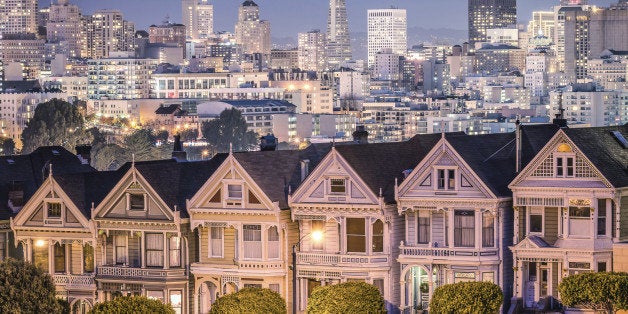
Recently, the Old Bronx Borough Courthouse, a stately South Bronx edifice empty for 37 years, was miraculously transformed into a pop-up gallery space by No Longer Empty (NLE), a New York non-profit. The show was called "When You Cut Into the Present the Future Leaks Out." The show has been a magnet for local schoolchildren, parents, educators, community groups, residents of the Bronx and beyond.
By all accounts, the exhibit has been a success.
However, NLE was rebuked by some local residents and artists, because one of the planned promotional events was a party for real estate brokers. Some of the artists felt that they were being used as a lure to hook developers, to the detriment of long-time community residents.
Cooler heads prevailed and the party was cancelled. But the NLE's misstep shed light on how a neighborhood's appeal can be fostered by a vibrant art community. Perhaps more to the point, it highlighted the power of anti-gentrification forces.
Is it any wonder why "gentrification" has become a dirty word?
The Great Circle of Life, New York City-style, goes something like this:
•Economic down-cycle: cripples employment, tax base heads for greener pastures, service cuts inconvenience wealthier residents, but poorer precincts positively seethe. Once-thriving neighborhoods fall upon hard times, crime spikes, arson flares. More residents leave, tax base shrinks. Services are slashed, due to budget cuts. Those who can, leave.
•Economic fulcrum swings back: the crime coast clears a bit, artists and other, so-called creative types seek and find large spaces at low rents, in vacant and underutilized areas. Local service businesses eventually sprout, media machines catch on, in lock-step with the real estate developer community. Weekend gawkers visit the scruffy but "hip" new centers of creativity, the area becomes desirable; the ranchers follow the trappers. Rents go up. Landlords see a good thing and long-standing tenants are squeezed. Hard.
•The West is won: the trappers and ranchers, and even the farmers and first-wave shopkeepers that followed, are pushed out. They are replaced by high net worth individuals, streets are lined with dumpsters as gut renovations get underway. In time, the vibrancy and diversity that first attracted the post-artist wave is driven into the dust, a new enclave by and for the wealthy is created and another long-time neighborhood is irrevocably altered. Long time residents are forced out, gone for good.
To be clear, a thriving art community is not the only magnet for neighborhood revitalization. Mass transit is an attraction, as are the "good bones" of diverse housing stock.
Meantime, the ripple effect of ex-Mayor Bloomberg's marketing of NYC as a "luxury product" (his words) continues to confound residents in desperate need of affordable housing, quality schools, and safe neighborhoods to work and live. The velocity of change in Dumbo, the Lower East Side, Harlem, Washington Heights, Inwood, Cobble Hill, Park Slope, Williamsburg, Greenpoint, Bushwick and, now, Ridgewood, has not gone unnoticed by those who have gutted out life in the five boroughs, even as others fled.
This week marked the 38th anniversary of the Great Blackout of 1977. New Yorkers of a certain age remember those days of garbage and police strikes, unemployment, dirty and dangerous subways, burned out buildings and broken lives. Forgotten neighborhoods that teetered through years of decline and white flight finally collapsed one fateful night in a furious rampage of fire. Burned out husks of commercial hubs remained vacant for decades, in tattered testament to our city's bifurcated class structure.
Those who fear gentrification certainly do not wish for a return to those lost days. However, people are legitimately concerned and they push back hard at the sight of developers seeking to create yet another neighborhood flip fest, at their expense.
Change can be good. Improved schools, transportation, job creation, street safety, housing - everyone wants that. And, let's face it, the better a neighborhood gets, the higher housing prices go. But it's a question of degree, of balance, of compassion.
It's not a question of being anti-improvement. Rather, it's more about realizing that no one likes to get stung, when the bees at long last come home for the honey.